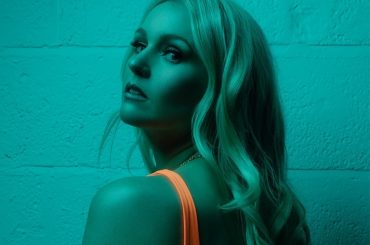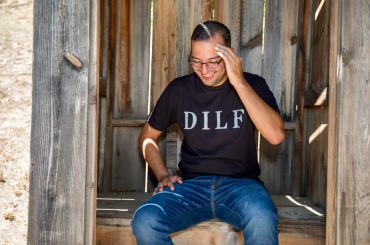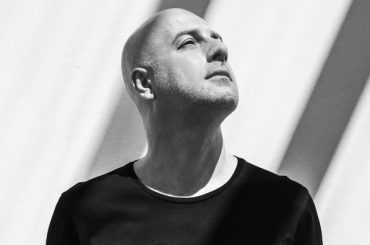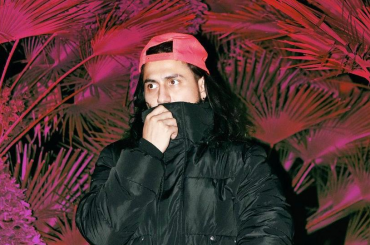Call it a second wind, reinvention, or new life; but however you slice it, Dubfire has built a dance legacy two times over.
Ali Shirazinia’s story began in 1991 when he formed the now-legendary group Deep Dish with fellow Washington, D.C.-based DJ/producer Sharam Tayebi. Fifteen years, two studio albums, and an innumerable amount of high-profile remixes later—including a Grammy-winning rework of Dido’s “Thank You” in 2001—the pair called it quits to pursue other ventures.
The rise and fall of a successful musical group is typically the fodder of a VH1 Behind The Music special, with down-and-out artists reminiscing on the glory days of a band’s exploits. For those former members who do continue in the solo realm, it’s common for the former members’ further pursuits to be held against and compared to the group’s seminal work.
Somehow, Dubfire eschewed this tradition entirely. Completely redefining his sound by abandoning Deep Dish’s peak-time, vocal-heavy progressive house aesthetic in favor of a dark, techno-centric style, Dubfire crafted a new identity that owed little of its success to his earlier career. With a series of massive releases—including last year’s “Exit” with Miss Kittin and his 2009 remix of Radio Slave’s “Grindhouse”—and tight, technical DJ performances integrating the latest gear and technology, Dubfire’s legacy as a solo artist is just as storied as anything he’s done collaboratively.
He’s showing no signs of resting on his laurels, either. This past October, he debuted a brand-new live performance concept at the Roest Warehouse as part of Amsterdam Dance Event 2014. Bridging the gap between a DJ set and a truly live performance with custom visuals, real-time lighting and video, and pure freedom of artistic expression, Dubfire Live:HYBRID represents a further evolution of the Iranian-American artist’s work.
The show’s name is a fitting title, as Dubfire’s presentation is a hybrid of his past and future. While he continues to push on with new releases by himself and from artists on his SCI+TEC label, 2014 saw the long-awaited reuniting with Sharam come to fruition for an official Deep Dish reunion. Since the release of the group’s comeback single, “Quincy,” and subsequent live dates, Dubfire has brought his history in line with his now.
DJ Times caught up with Dubfire the morning after a performance at Space Ibiza New York this winter as part of his SCI+TEC label night at the club, and he dished on the new live show, Deep Dish’s reunion, and how technology has shaped his career.
DJ Times: How did that initial concept to do a live show come to be?
Dubfire: I had been wanting to put something like this together for years, but it is wasn’t until I felt like I had enough material and a body of work that I was proud of that I felt I could put it together in a unique way, reinterpreting all the ideal tracks, and also collaborate with the right people. The visual design company—VolvoxLabs—is based in Brooklyn. Once the idea came together, then I had to find the people. When I found the people everything kind of fast-tracked to the first show basically, from the time we came up with the idea. While I have been thinking about it for years, it wasn’t until I found the visual design team, but then it happened very, very quickly.
DJ Times: How did you find those artists?
Dubfire: With VolvoxLabs, I actually initially approached Jarrett [Smith] from Derivative. He is the guy who is basically responsible for the Plastikman show, and he developed the TouchDesigner software which has become the sort of industry standard of software in terms of live performance. He initially accepted, but it turned out that he was going to be too busy. He knows a lot of people in this industry who are trying to get our foot in the door, so to speak, and he recommended VolvoxLabs. They were fans of my work, and we had an initial meeting in New York and hit it off, and the rest just happened very naturally.
DJ Times: The title is Dubfire Live:HYBRID. What does that refer to?
Dubfire: The word “live” is in there not only visually—like when someone sees my name on a flyer—but also concept-wise. It’s to tell everyone that it’s not a DJ set; it’s a live performance. I knew I wanted to do more shows—maybe the next show centered around something like an album with a completely different concept—so I wanted to make sure that “Hybrid” was there. Hybrid obviously has a lot to do with the narrative that is sort of playing out visually in this performance. We wanted to show that we do have a specific look and a specific concept, and Hybrid is this particular show’s concept and look. I haven’t figured the name for the next one yet, but it will have a completely different look and concept. People will be able to talk about all the tours that I do and not only have a name attached to each tour, but visually see each tour as an identity unto itself.
DJ Times: From what I recall from the performance at Time Warp US in Brooklyn last year, many of the visuals were inspired by the meeting of science and technology. What inspired that concept?
Dubfire: What I didn’t want to do is just take a bunch of images and throw them against the screen and do it the way everyone is doing it these days. You see, a lot of the festivals and the more EDM-centered artist kind of trying to throw in much as possible—not only on to the screens, but also on to the audience—and I feel that audiences are becoming a bit insensitive to the barrage of light and visuals and sound. What we wanted to do is create a story, something that people can follow, and have a great interplay between light and sound and visuals. That is where the members of the team had to really take a step outside the comfort zone and realize we are all coming at it with our unique sort of vision, and we will have to try to work kind of like jazz musicians.
DJ Times: How so?
Dubfire: We all had to try and create some sort of a balance between what we are all doing. There were moments in the show when we were developing it where I had to ask or the lighting guy would suggest that we scale things back and allow of visuals to come to forefront. Other times, the visual guys said they are going to totally kill what is happening on the screen behind me so we can zero in on the screens that I am sort of placed in between, and that was a cue for the lighting guys to take over. There is a great balance between what everyone was doing. We were doing it in a way where we didn’t just throw everything that we had at the audience.

DJ Times: What sort of equipment are you using up there? Is it different from a regular setup of yours?
Dubfire: During a DJ set, I’m using [Native Instruments] Traktor and [Ableton] PUSH as well, which is also something I am using during the live show’s setup. However, the live shows are based around Ableton Live, and all the music has been reinterpreted. Everything is coming out through its own separate channel, and I am able to completely rework the tracks on the fly or—if I want—to let the sequence play out. We made it really, really flexible so I am free to experiment as much as possible within the parameters that we’ve set for a show that has a beginning, middle, and end.
DJ Times: What kind of freedom are you afforded each night? Can the music change significantly from show to show?
Dubfire: Totally. It has to do with my comfort level. I have done three shows so far, and those three shows were a sort of test to see if all the technology was going to work. Funnily enough, we had virtually no problems with the first show, but the second and third show we had completely unrelated issues. It’s hard for me to completely dive into how everything is laid out. We work everything on the fly now, but once I get more comfortable with the technology and once we know everything is working fine, then I will be free to do that.
DJ Times: How has the response been?
Dubfire: Really, really good! In some ways, it is sort of an uphill battle because these days there aren’t a lot of artists who are doing a live show in the techno field. A lot of the producers who aren’t DJs that are getting booked will have sort of a plug-and-play set up. They don’t bring a visual concept, they don’t come at it with their own lighting and sound guys, and they are not really like putting forth a performance-based live show. That’s where we are coming at it, and yeah, it is difficult to try and convince the promoters to invest into something on this scale. I guess they are not used to seeing somebody from the techno arena coming at it with that kind of professional quality and team.
DJ Times: In addition to the live shows, you’ve still got your regular DJ sets. How do they co-exist with each other?
Dubfire: For years, everybody has wanted at me to play my own material. A lot of times when you are working on it in the studio, you listen to it over and over again so many times that the last thing you want to do is play it out in your DJ sets. This was also an opportunity for the fans to hear selected works of mine reinterpreted in a new way as part of my “Dubfire sound.” The DJ sets are DJ sets; it just needs for me to be free to play whatever I am feeling at the moment without any sort of parameters set around me.
DJ Times: Are the lighting and visuals controlled live so that they can react to what you are feeling?
Dubfire: Just like I can be free to completely break down what I am playing and rebuild it in a new way or have it play out the way it has been programmed, the lighting guys and the visual guys can do the same thing as well. I am sending time code and MIDI information to all of them. While everything is sort of programmed and they can sit back as well and let everything play, they are able to come in and make each performance we do unique and different by reading and watching the crowd and manipulating things as they see fit.
DJ Times: So it’s definitely a team effort.
Dubfire: Yes. Also, each audience is going to be different, so I have two encores. I can decide which encore to play and I can decide in what order I’m going to play it in, and I can also decide to lengthen or shorten it. We really wanted to be free in that regard, with a kind of approach like that of musicians with real instruments who are completely open to read an audience and adapt to handle any situation.
DJ Times: Technology seems to be a constant thread throughout your career, even down to your label being named SCI + TEC. What sort of impact has technology had on music?
Dubfire: I’ve always said that I am sort of a slave to technology, and technology moreso than ever before seems to shape every aspect of our lives. With respect to music, it’s not just the Internet; it’s having slim laptops, really powerful software, and portable hardware that have really allowed to take whatever we are doing and take it anywhere. We can set it up and do it the same way that we are doing many, many years ago with a desktop computer and tons of hardware. It has really afforded us the opportunity to completely free to record, perform, or just play back and listen to music.
DJ Times: Are there specific ways you feel you have to adapt your DJing style when playing to different locations around the world? How are the crowds different depending on where you’re playing?
Dubfire: You always have to adapt. I mean, South American audiences are a lot different from the European audiences, and in Europe the Italians are different from the Spanish, Portuguese are different from the crowds in Germany, etc. So yeah, it is important to read the crowd. Sometimes I go into a situation where I made a playlist of the current stuff that I want to play in a particular order, but I always find that if I try to stick to that from one country to another, audiences are going to respond differently. I have to alter what I do and adapt what I do to match the audience. Sometimes it takes an hour of throwing different things at them to see what they’re responding to, what they’re connecting to before you are full in sync with your audience.
DJ Times: You’re constantly touring, you run a label, and—despite everything you’re doing—you still find time to produce. I don’t know how.
Dubfire: I don’t either, I mean, it’s technology. On the train back today [to Washington, D.C.], I am in the studio. I’m supposed to finish arranging; Sharam and I are in the studio working on Deep Dish material. We are supposed to finish arranging this one song that we started a couple days ago, and I’m able to do that sitting on the train coming back home, which is fantastic. That was unheard of when I first started producing music.
DJ Times: So you can do everything on the road now?
Dubfire: Yes, I can sit on the beach and compose music if I wanted to.
DJ Times: What gear are you using in the studio or on the road studio both hardware and software wise?
Dubfire: I have a pretty simple setup and pretty much everything I use is inside the computer. I use Ableton Live now more than ever. Before that it was Logic; I was using that for years. And before that it was Cubase. For hardware, it’s a sound card and a USB keyboard, and that’s really it.
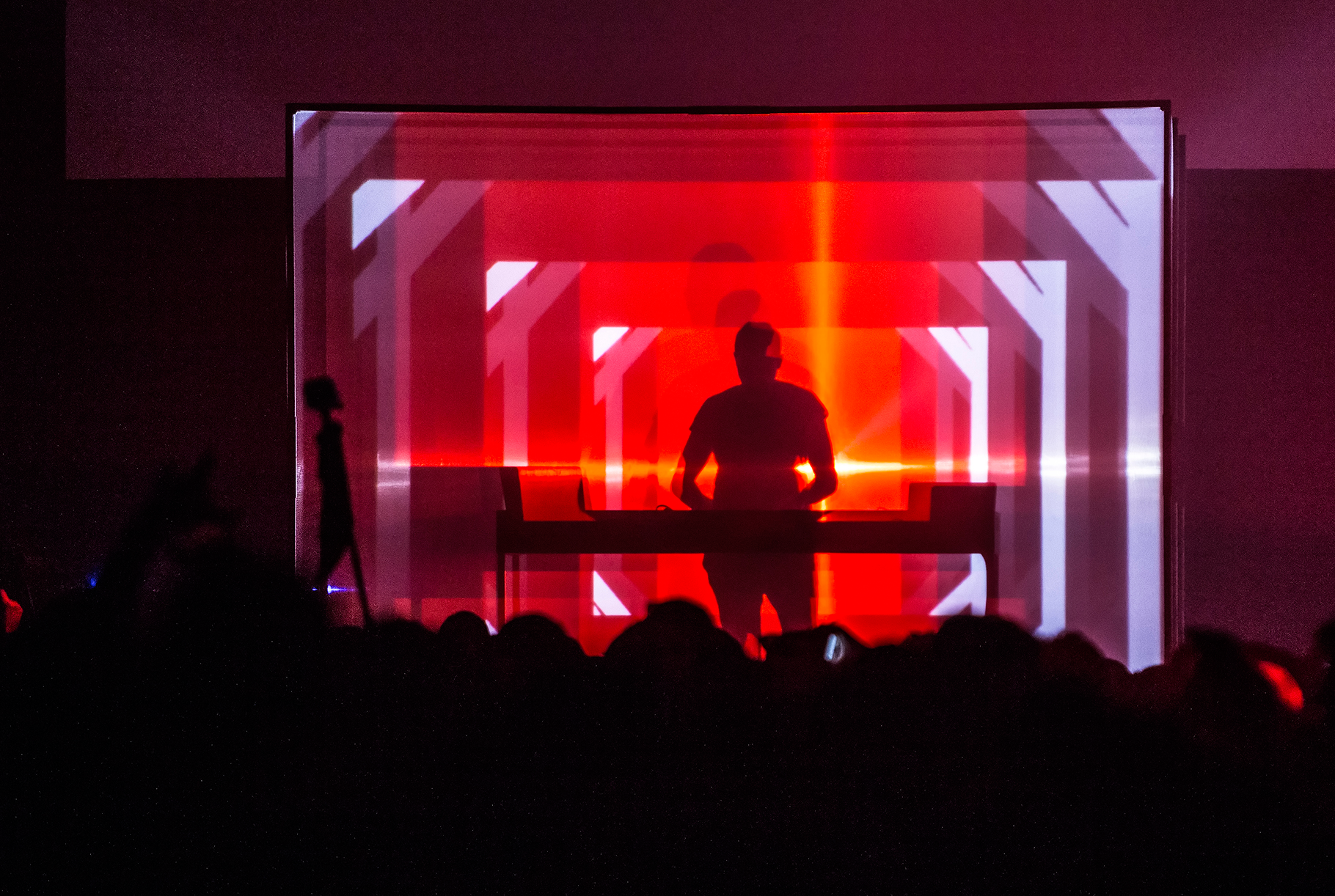
DJ Times: You reunited with Sharam as Deep Dish last year for new material and live dates. How has working collaboratively again been?
Dubfire: It was something we wanted to do for years, but it wasn’t until enough time had passed to settle our differences between one other that we could—personal issues and business differences and stuff like that. Once we had set that aside, and once we got to a point of being comfortable with who we were as individual solo artists… We both went out having always been known as a collective. When we ventured out as solo artists, it was a bit scary at first, but I think we both kind of proved ourselves in different ways and felt much more comfortable as individuals within the world of music. When we came back, we came at it with a little bit more comfort, professionalism, and tolerance for one another’s differences. I’ve got my sound and he’s got his sound. We knew that it was going to be interesting to come back together having learned and having explored what we always wanted to do within Deep Dish, but maybe wasn’t necessarily appropriate for Deep Dish. Coming at it has sort of been a breath of a fresh air; it has injected new life into the creative synergy that we have.
DJ Times: What sort of plans does Deep Dish have for the rest of the year?
Dubfire: We have been in the studio for the last two weeks, and we have another three weeks to go. It’s basically to create new music because a lot of the younger audiences these days have no idea of who Deep Dish is. We haven’t been together in more than eight years, and a lot of the newer audiences are much too young to remember what we’ve done in the past and even what we had done before we broke up. We knew that whatever we do as Deep Dish has to be driven by new music. Last year in hindsight, I think we probably launched the project prematurely. We had intentions of working as much as we could in the studio, but when we kicked everything off and released the new single [“Quincy”] and looked at our schedules, we realized that we had very little time to devote to creating new music. That’s why it has been such a big lull between what we released then and what we hope to release in the near future.
DJ Times: Are you two collaborating remotely or in the studio together?
Dubfire: We try to do a bit of both. As much as we are able to tolerate one another more than we had in the past, I think we are both more comfortable working separately. When we are finishing a project or when we are beginning a project, we are in the studio together, but during the middle stages—like crafting the arrangement or other things—we tend to work separately.
DJ Times: You’ve been running SCI+TEC for quite a few years now. What kind of identity do you think it has made for itself both musically and as a brand?
Dubfire: A lot of people think that SCI+TEC has a particular sound, but I’m not sure I agree with that or hear it because I’m releasing music by such varied artists from all backgrounds and from all over the world. It’s funny because I am getting approached by artists who are sending me demos saying that they think that their projects specifically work for the label because they feel that the label has a sound. I’m guessing that everybody feels we have a sound, but I don’t really hear it. SCI+TEC has been always be established as an outlet to release the music of a lot of talented people whom I was meeting on a daily basis and people who were sending me demos. Also, it was established as an outlet to release my own solo material, and the label has just gone from strength to strength. By the end of this year, I think we’re going to reach 50 or 60 total releases since the label started in 2007. We have been around for a long time and have the support of a dance music community, and a lot of producers know that to have a release on SCI+TEC can do wonders for their career. It’s been great to try to give everyone a shot at this great music.
DJ Times: Given everything you’ve got going on, it seems like there’s a lot of Dubfire in 2015.
Dubfire: Yeah. There’s stuff on the label, I am doing a follow-up [to “Exit”] with Miss Kittin, and me, Radio Slave, and Danton Eeprom are talking about doing a new sort of “Grindhouse” project since that was such a big project for all of us. There’s also my collaboration with Oliver Huntemann. We are actually working on one final song and are putting everything that we have done together—which I think is six original songs plus all the remixes—and we are repackaging it. We’re probably going to have four exclusive gigs to represent each of the Elements of Life of the Elements Series.





